Behind the scenes at the Yorkshire Sculpture Park: How eleven staff manage 500 acres of land at one of Wakefield's most popular attractions
and live on Freeview channel 276
Officially founded in 1977 on the former 18th century Bretton Hall estate, YSP has gone on to win the Yorkshire Post's Tourism Awards and Visitor Attraction of the Year 2023, and boasts sculptures by Hepworth, Moore and Hirst.
With annual footfall surpassing a quarter of a million people and a land area equal to Monaco, the Wakefield Express went behind the scenes to meet the small and dedicated team tasked with the huge operation of managing the grounds at YSP.
Advertisement
Hide AdAdvertisement
Hide AdThe estates team and volunteers play a crucial role at YSP. The grounds and their upkeep provide the backdrop to world-class art pieces, and changes to the landscape can drastically alter the viewing experience.
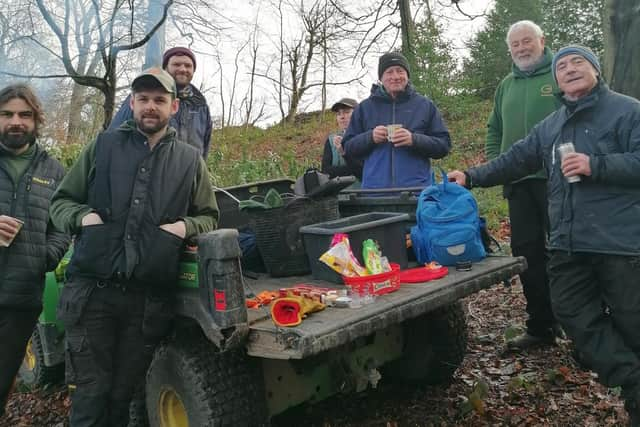

Just one example of this could be seen as we passed a fallen tree to the left of the Lower Lake.
Will Grinder, who leads the estates team, explained how particular the artists can be about the placement of their sculptures, considering all aspects of the landscape.
The tree in question was a 200-year-old sycamore, which had sadly succumbed to one of January’s storms, and had been part of the backdrop to Damien Hirst’s The Virgin Mother sculpture. It will now be removed.
Advertisement
Hide AdAdvertisement
Hide AdElsewhere, on the south west side of the Lower Lake, the estates team is responsible for maintaining 49 Square – a sculpture by David Nash. Selected for the ice white of their bark, 49 Himalayan birch trees stand equidistant from each other in a grid shape.
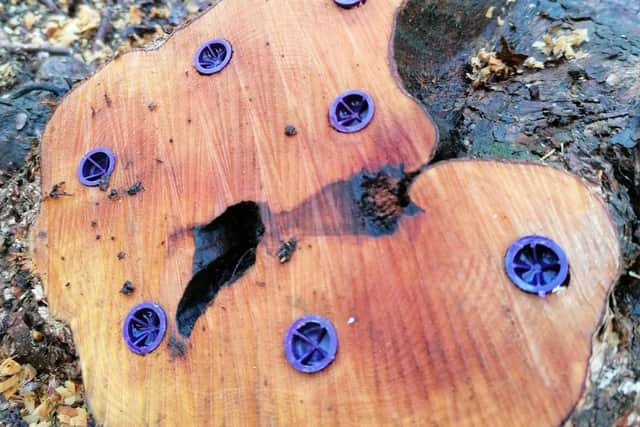

Will explained how the long-term goal of the living sculpture is to achieve a grid of perfectly white columns.
The trees’ management is tricky, however. He explained: "The natural instinct of these trees would be to grow and have multiple leaders."
As they currently stand, the trees have one leader and one very straight stem, rather than wide crowns and multiple stems. This is down to the continuous pruning of anything that grows with the potential to compete with the central stem.
Advertisement
Hide AdAdvertisement
Hide AdWill said they have to essentially be pruned “against their own instinct”, and that this will become increasingly difficult as the trees are encouraged to grow taller. They will eventually grow taller than any Himalayan birch you would normally see.
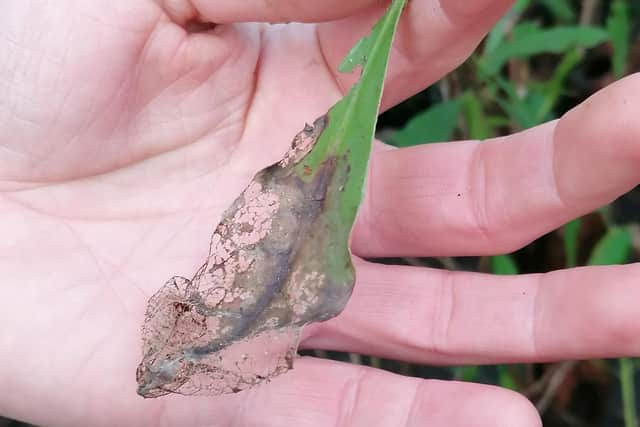

Markings on the central stems indicate where the silver birches have been pruned over the years, and some wear guards to support them as they grow. A telescopic saw pole allows the trees to be pruned from ground level.
Communication between the estates team and the artist is also maintained to discuss any changes that are made.
The biggest job for the team, however, was underway on a slope on the Upper Lake’s top-left edge where a small group of estates staff and volunteers were removing and burning rhododendron plants.
Advertisement
Hide AdAdvertisement
Hide AdLast summer, the park was taken unawares when the Forestry Commission flew a helicopter over the grounds, and used a camera to detect potentially diseased rhododendron ponticum and larch tree.
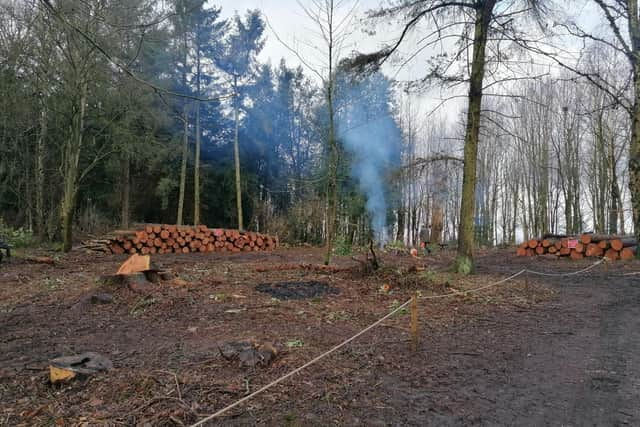

After taking some samples, the park was issued with a Statutory Plant Health Notice with a deadline to remove the diseased plant.
The detected disease was a fungal-like organism – phytophthora ramorum – which can spread to neighbouring plants and kill them off.
This was bad news for the team, as the rhododendron abounds the entirety of the Upper Lake, and what has ensued since the winter is a 22-phase operation for its removal, with only the park’s four volunteers and seven estates staff to tackle it.
Advertisement
Hide AdAdvertisement
Hide AdAlthough the removal of the diseased plant would have been carried out at some point – regardless of the Forestry Commission’s notice – doing so on such a scale and within such a short time frame is a mammoth undertaking for the team.
To give a scale of the task at hand, about 100 metres worth of the plant has been cleared so far. This first phase has taken roughly nine weeks.
Maurice Morgan was one of the volunteers hard at work on the slope of the Upper Lake. Speaking about the scale of the job, he said: "This is one of the biggest.
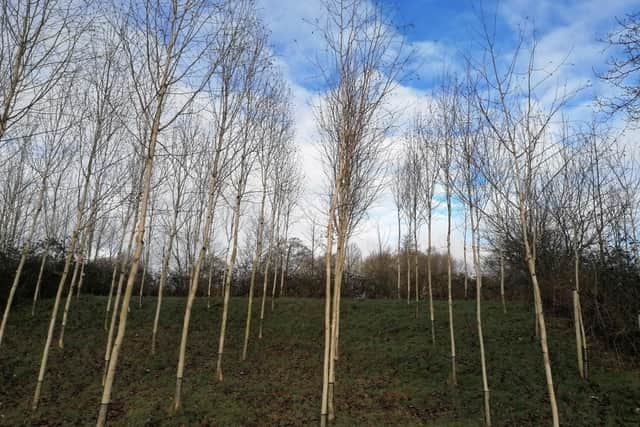

"It's one of the toughest jobs because it's physically hard.
Advertisement
Hide AdAdvertisement
Hide Ad"When you're up and down a slope, and if it's a bit muddy, and you've been sawing through thick branches and then if you're dragging them up and down – I won't need the gym at the end of today."
Maurice has been volunteering for around 11 years. He volunteers about once a week, and frequently visits the park on his days off.
He added: "We're used to it. We enjoy being here and doing it.
"We're on a slope and it's muddy, but that's all part and parcel of it.
Advertisement
Hide AdAdvertisement
Hide Ad"One of the good things about it is, at the end of the day you can see where you've been, and you've made a difference.
"All the volunteers get the same feeling – you get in the car at the end of the day and you've made a difference.
"It is an eye opener, from being a visitor walking around looking at exhibitions, and then getting behind and doing stuff, it makes you realise what a big thing this is to control."
The team use loppers to cut through the plants’ thinner branches, and a bow saw for the thicker parts. Once it is cut down to a reasonable size, it is thrown on the fire.
Advertisement
Hide AdAdvertisement
Hide AdAlso at work around us was fellow volunteer Derek Trimby, who has also been coming to YSP for just over a decade.
He said: "It's brilliant. What's a nicer place to be? It's beautiful, and every week we come we do something different.
"We're fit, and I think it helps to keep you fit. I think it's the old adage - use it or lose it.
"We always feel when we're done that there's a big difference. At the moment it's all to get rid of these rhododendrons.
Advertisement
Hide AdAdvertisement
Hide Ad"A couple hundred years ago when his lordship put them in, it seemed a good idea, but obviously they've taken over now so we're trying to get them back into some kind of order."
Even when all 22 phases of the removal have been completed, the rhododendrons will always need staying on top of. The advantage, however, is that it will open up the landscape and provide the team with an opportunity to plant more variety in the woodland.
On the patch where the team were working, you could see the remaining rhododendron stumps were pockmarked with bright purple spots.
These plastic pellets are called eco plugs and were embedded into the stumps last week.
Advertisement
Hide AdAdvertisement
Hide AdWill explained that a hole is drilled into the stump and the pellet is knocked into it, breaking the plug at the bottom. The plug then releases a small, targeted amount of granular glyphosate which will be contained within the plants’ roots, preventing regrowth.
This targeted approach is a more favourable treatment than cheaper options – such as using a neat chemical – as the glyphosate will not seep into the surrounding soil and risk killing everything in its vicinity, such as bluebells, snowdrops and wood anemones.
The placement guide is one plug per five - six centimetres of surface to ensure the chemical is effective – so the bigger the stump, the more eco plugs it requires to kill off the plant.
The team will revisit the treated stumps around the spring time, to check if any new shoots have formed. Once the plant has died, the bright purple of the eco plugs helps the team to locate them for removal, ensuring they do not litter the environment.
Advertisement
Hide AdAdvertisement
Hide AdA chainsaw will be used to slice off the top of the dead stump containing the pellets and it will be disposed of separately. The remaining stump will rot back into the environment.
The eco plugs cost about 70p each. Will said the park has spent around £1,000 on them across the whole woodland already, and 21 phases of clearing still lie ahead of them.